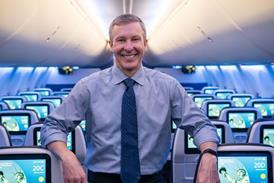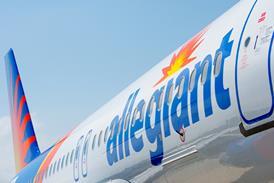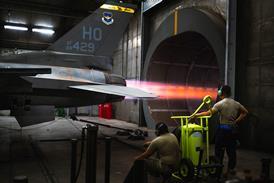Europe's air travel boom is great news for prospective pilots, who know a cockpit job is virtually assured once they are qualified. But one casualty of the growth in the number of airlines, aircraft and routes is the notion of a career as a flight instructor. The effect on flight schools may end up limiting the supply of new pilots.
According to Capt Derek Earp, head of training at Flight Training Europe (FTE) in Jerez, Spain, which is a major supplier of newly trained pilots for UK carriers, the European instructor shortage may be worse than that being experienced in the USA. UK carriers in particular, he says, are "taking guys straight out of training" with as little as 250h flying because demand is so great. Then "they're all being sucked upwards" as airlines at the "bottom" of the industry lose pilots to bigger carriers.
Newly licensed pilots with barely 200h instruction - 150h in the air and the rest on simulators - are getting jobs as first officers on Airbus and Boeing narrowbodies, says Earp. Moreover, airlines are hiring pilots at age 40 or 45, which never used to be the case. The result is "people aren't looking at instruction as a career any more".
What that means for FTE is that the days when 4,000h were needed to get an instructor's job are past. "We're lucky to get 500," says Earp.
Anthony Petteford, managing director of Oxford Aviation Training (OAT), agrees the industry is facing a dilemma, but is more sanguine about its effects. While it has lost to airline jobs some instructors with in excess of 6,000h, OAT's instructors are generally older and less likely to make that move, he says.
In the short term, Earp is adamant student training quality is not suffering, but FTE is having to emphasise the training its instructors get. That, combined with airlines' own standards of training and oversight, may ensure safety is not compromised. But as airlines' hunger drains the instructor pool, the quantity of qualified pilots may not keep up with demand.
The bottom of the training pyramid is already showing signs of strain, says Earp. UK local flying clubs, which typically take novices to their private pilot's licences before they move on to commercial schools like FTE, are starting to complain they do not have enough instructors and risk going out of business.
The other big strain on the system is financial. Since airlines took advantage of the post-9/11 shake-up to curtail or end their funding of flight training, students have had to bear the cost - which at FTE that comes to around £70,000 ($140,000). Higher salaries for instructors may help with the shortage, but would translate into higher tuition fees that may price out many students, Earp fears.
Petteford says OAT has raised instructor salaries - to some £40,000 - to combat attrition. But the way forward, he says, is to recognise that instruction offers a lifestyle that is more attractive to many more mature pilots. OAT is developing flexible and part-time employment contracts, and working with airline customers on a "mixed flying year" concept that would let pilots split their year between airline flying and instruction. That concept would have the added benefit of bringing current, real-life experience into flying schools, says Petteford.
Finding ways to train pilots with fewer instructors could help. One possible solution is the multi-crew pilot's licence (MPL), but there are unresolved questions about the mix of flying and simulator training needed to make it work. In any case, says Petteford, the instructors needed for MPL will be high-grade - and expensive.
The UK National Private Pilot's Licence Policy and Steering Committee is working on a Simple Single Engine Aeroplane instructor rating concept that would allow instructors to qualify more quickly by eliminating the need for commercial pilots' licence examinations. The UK Civil Aviation Authority says this should be possible to implement at a national level, but changing the European system would require a wider international consensus.
Source: Flight International























